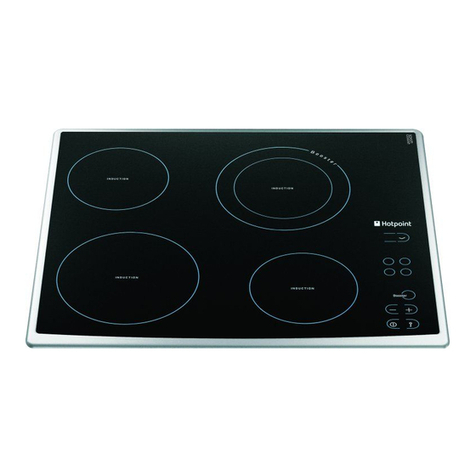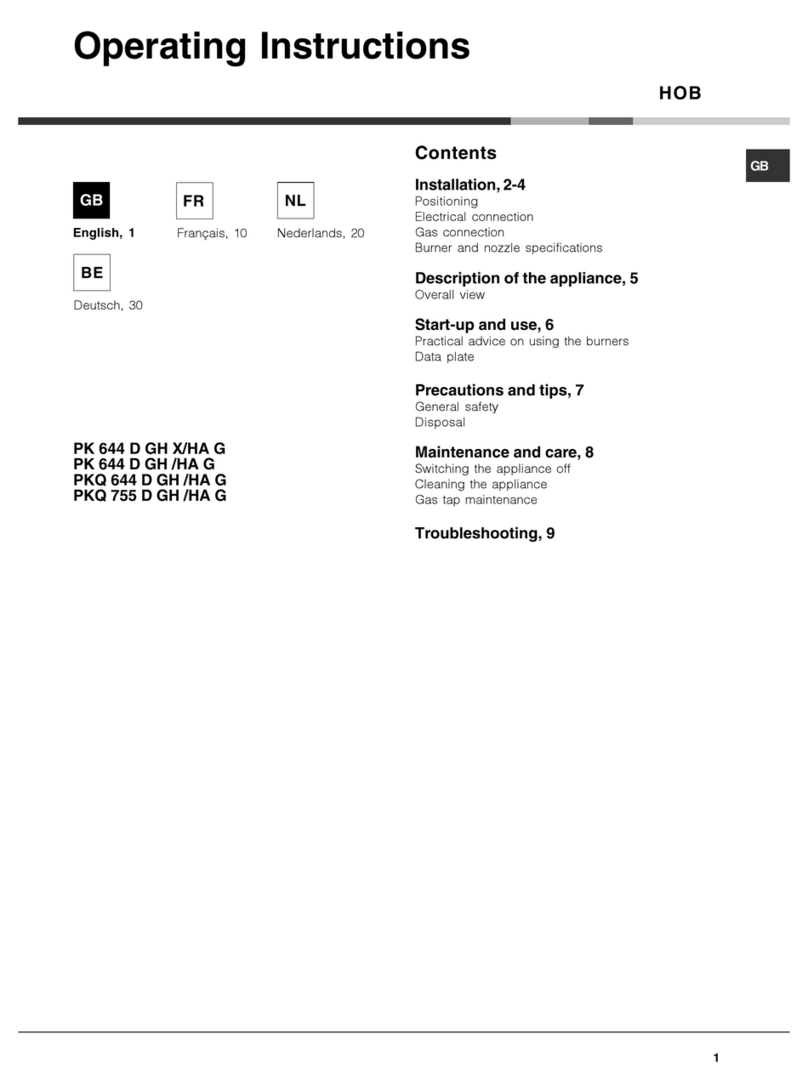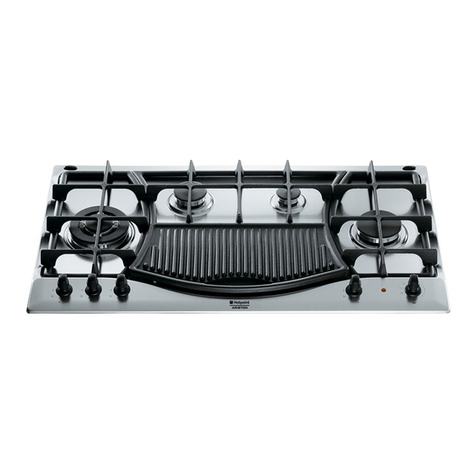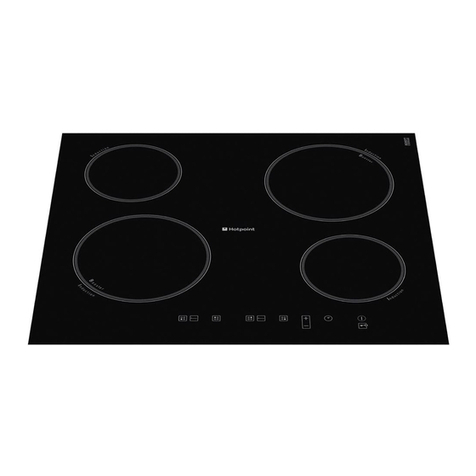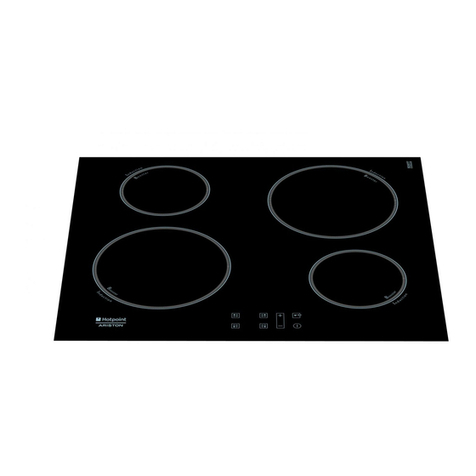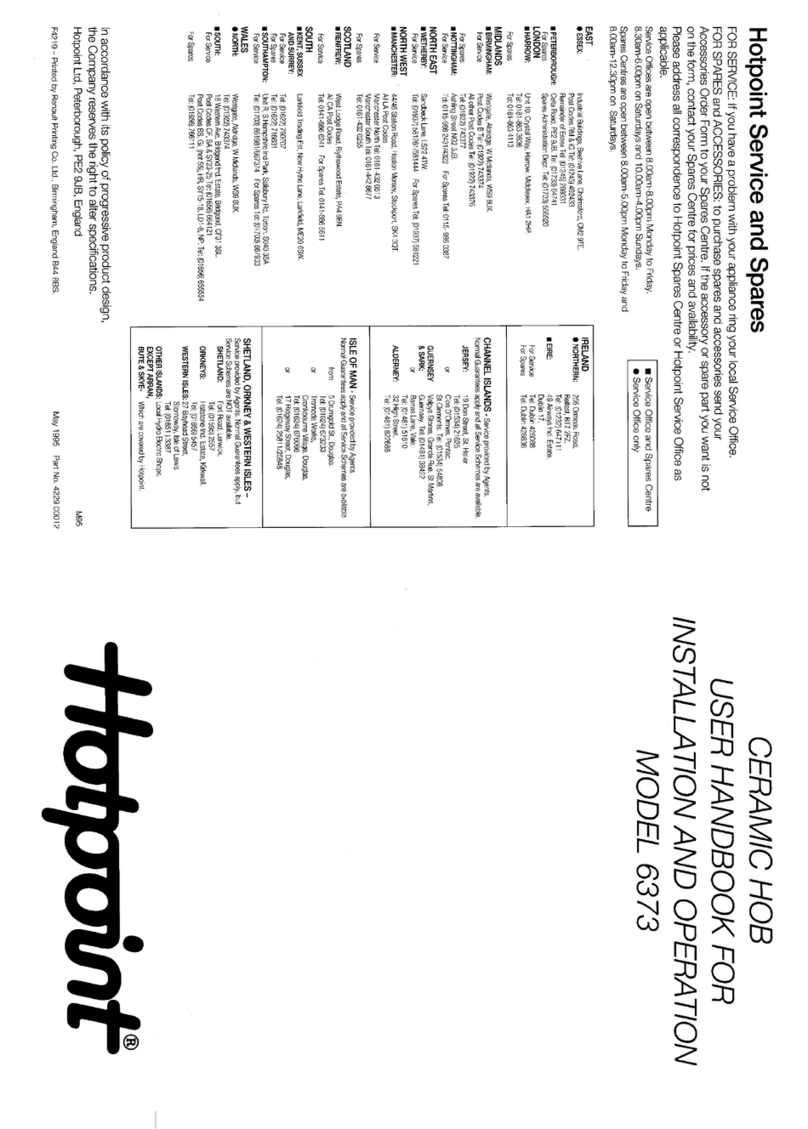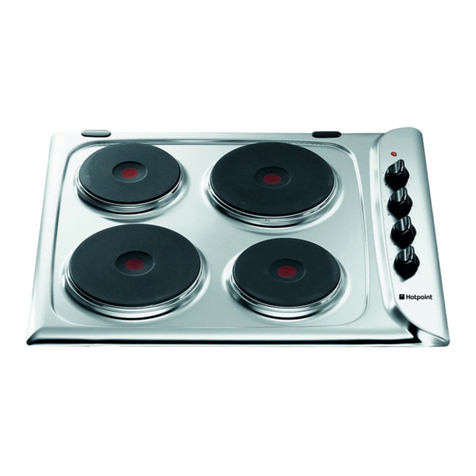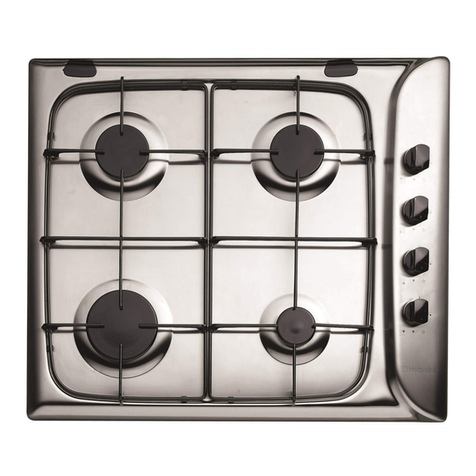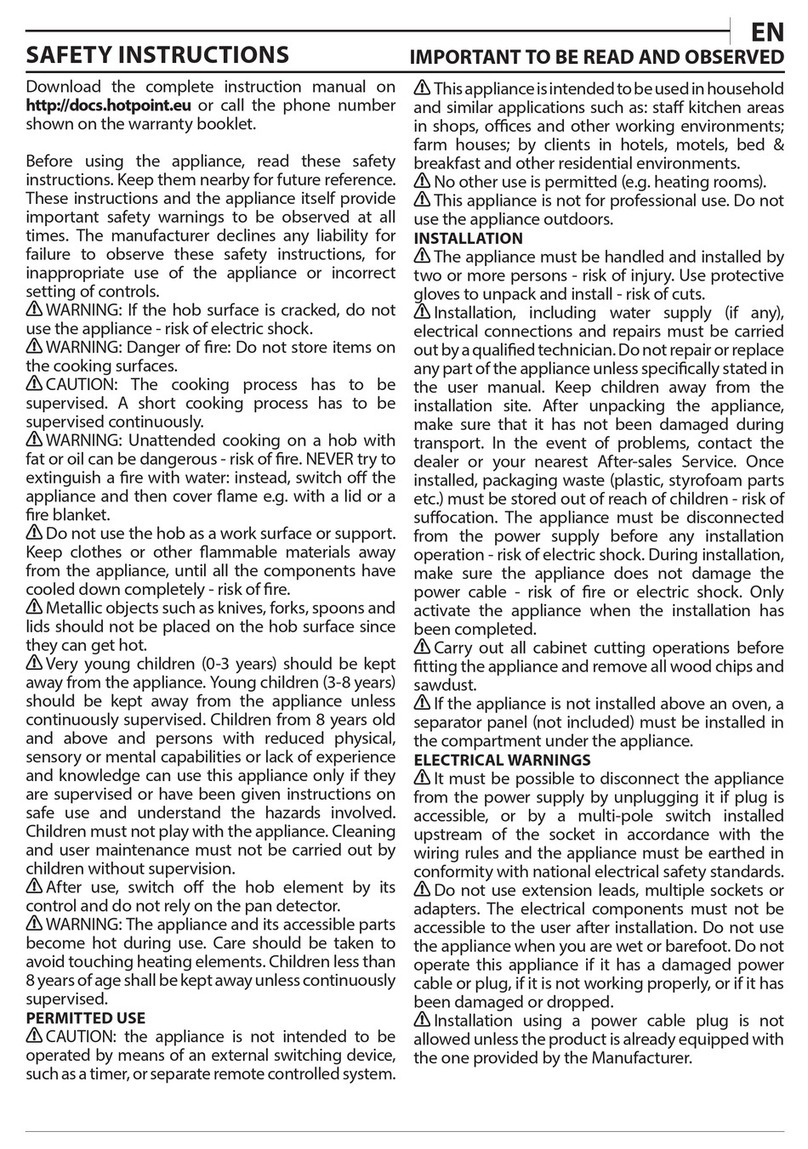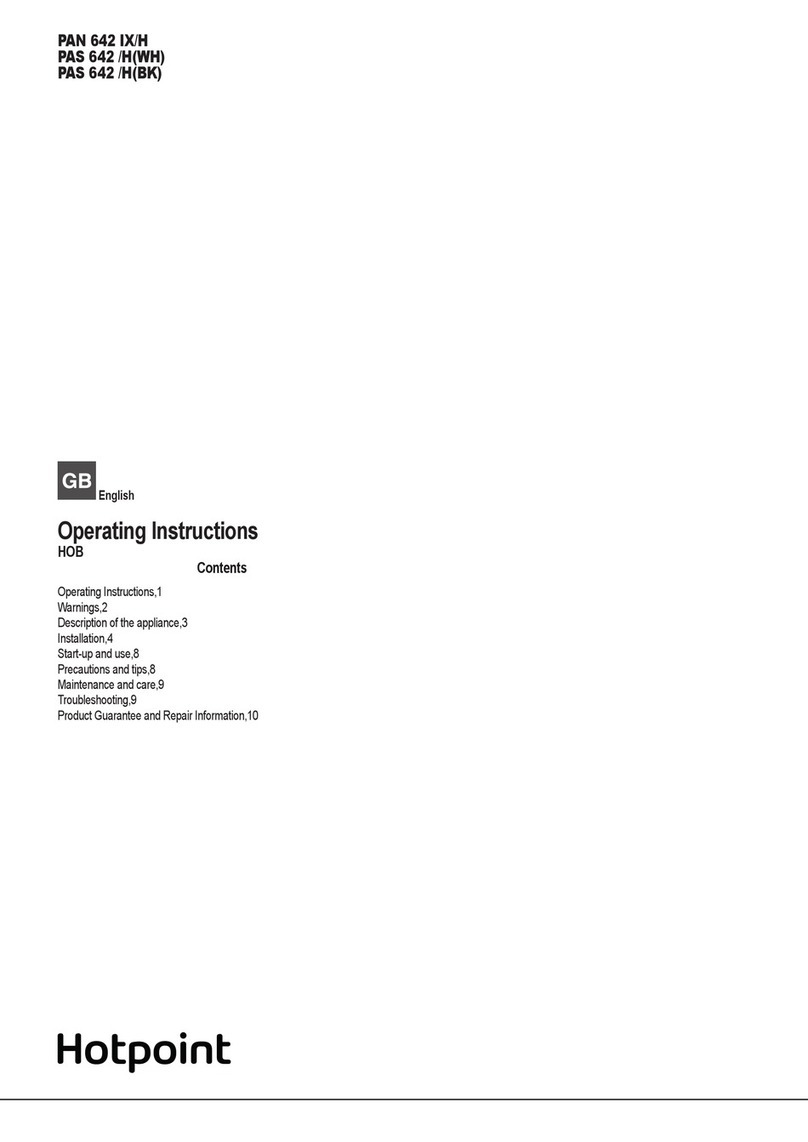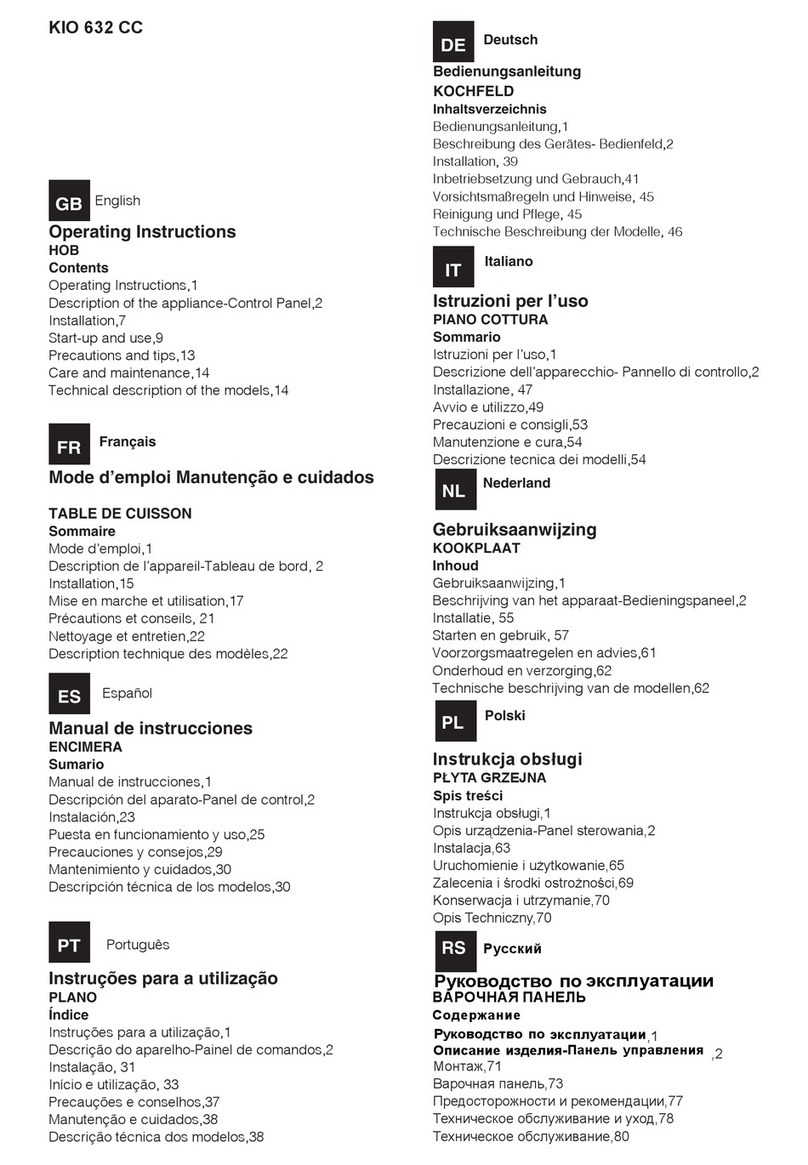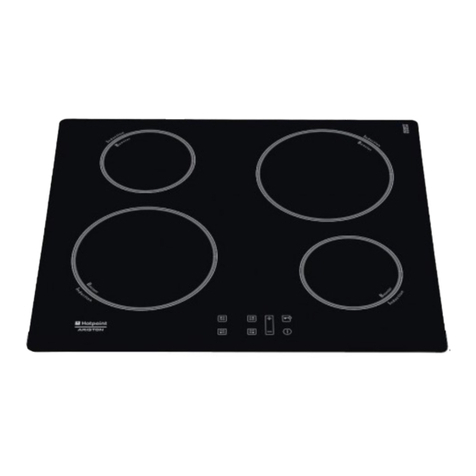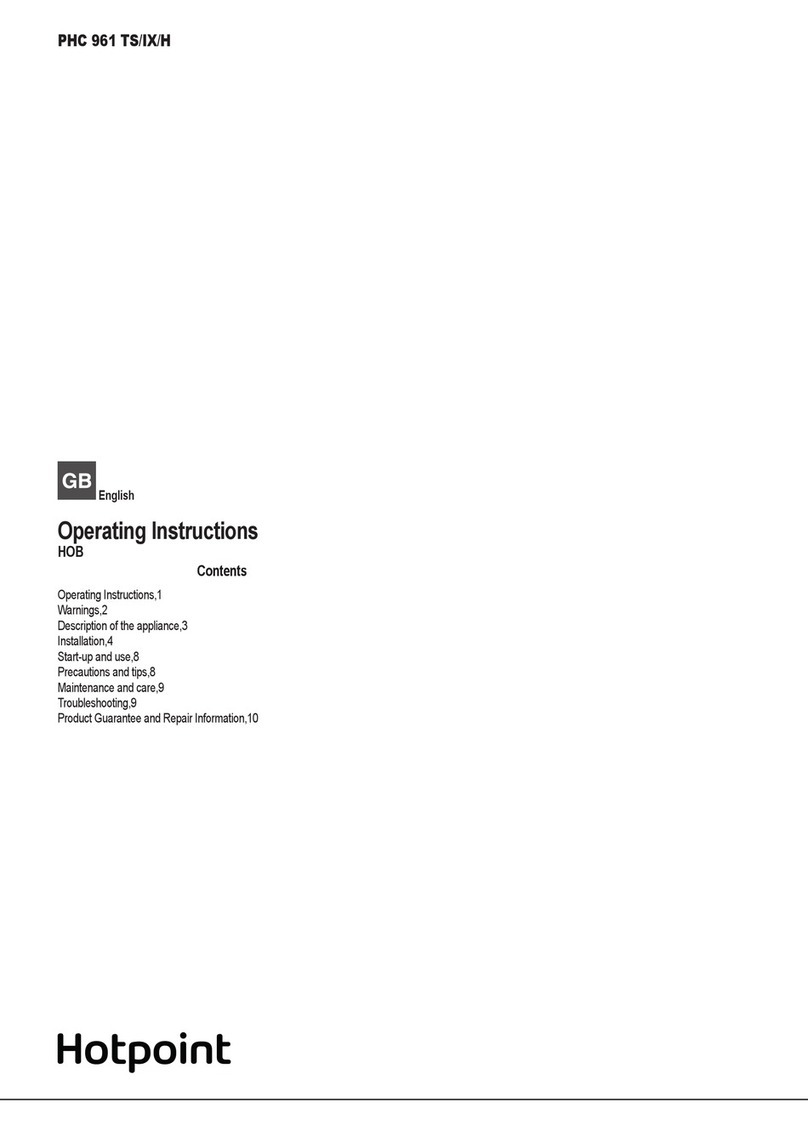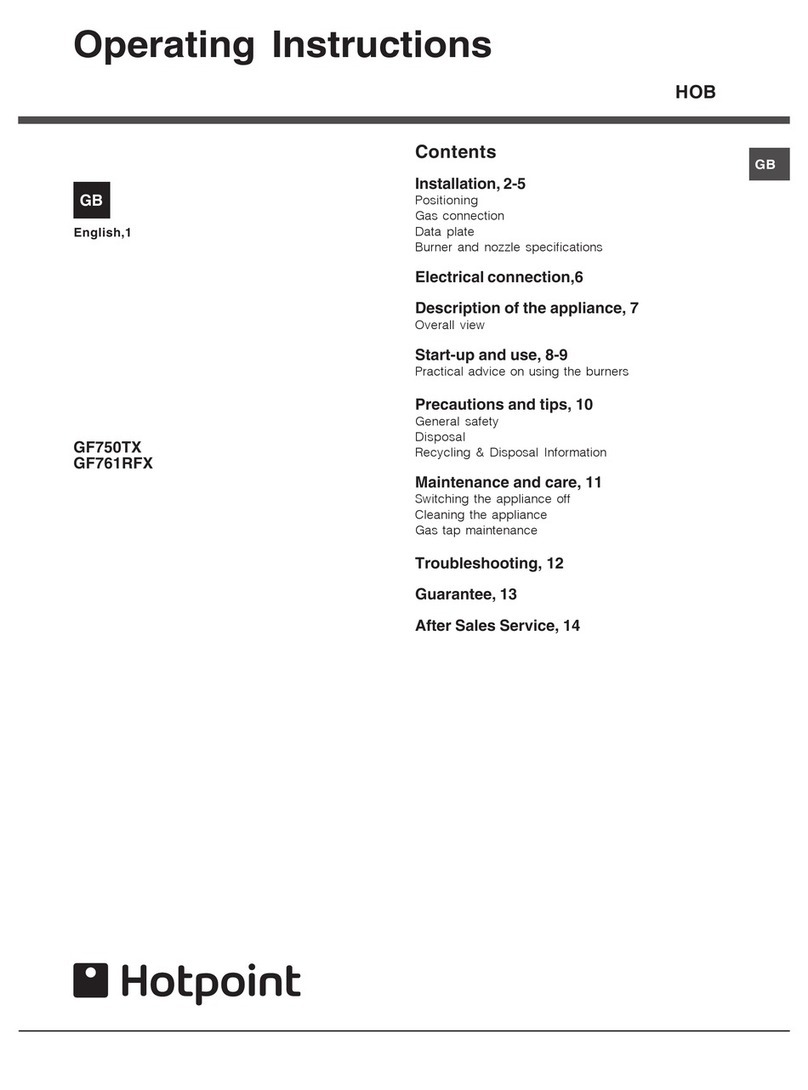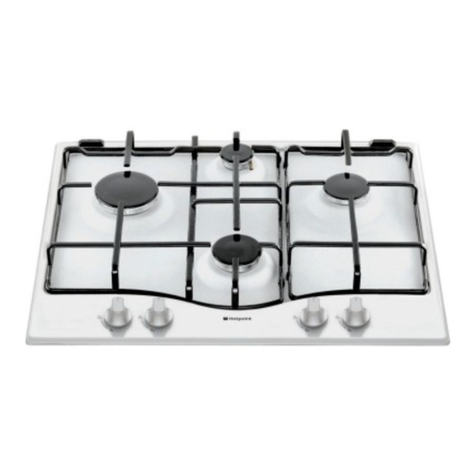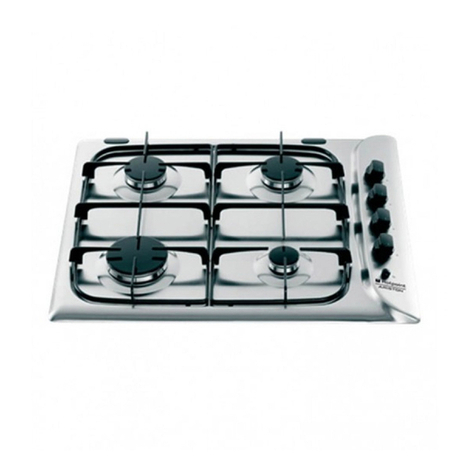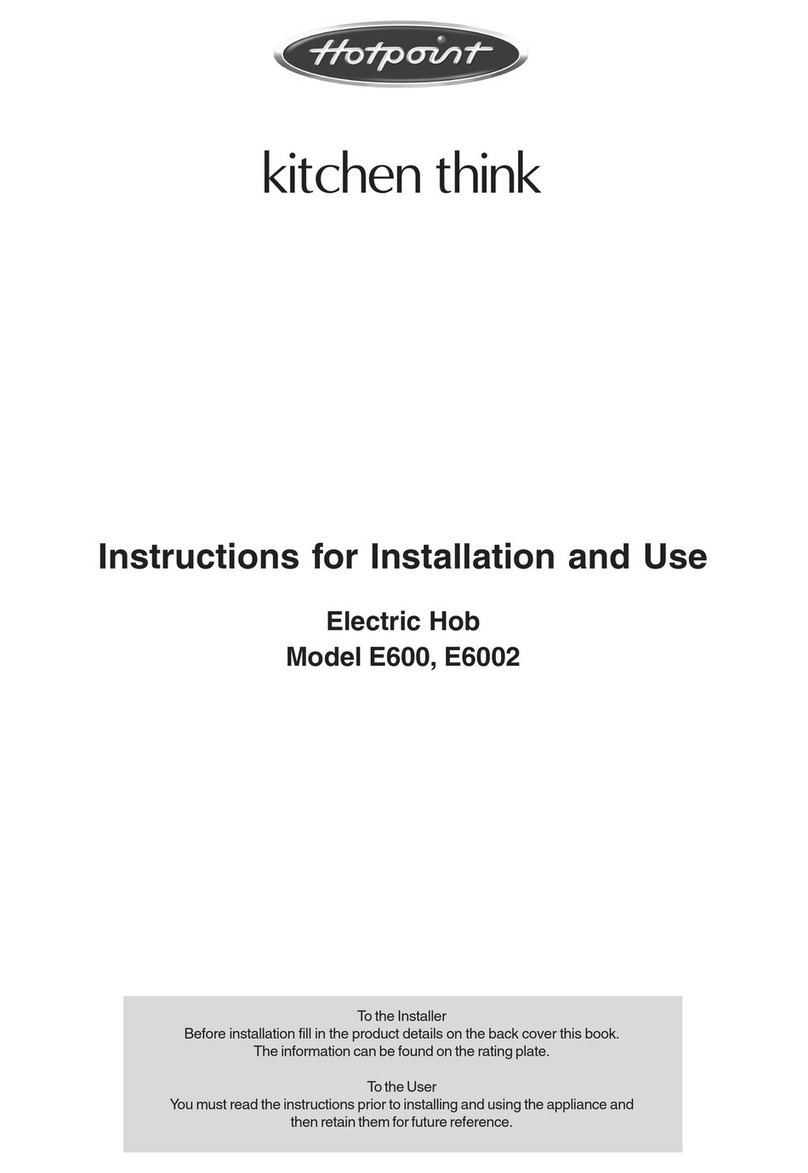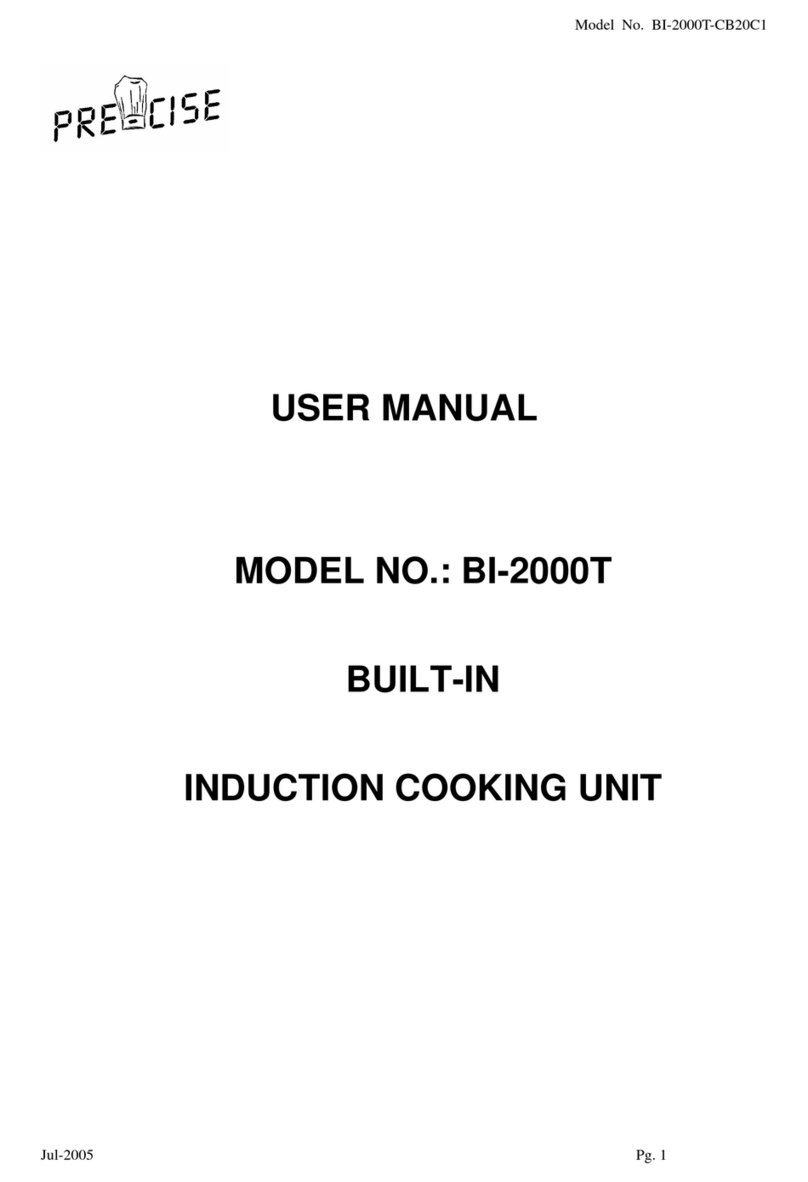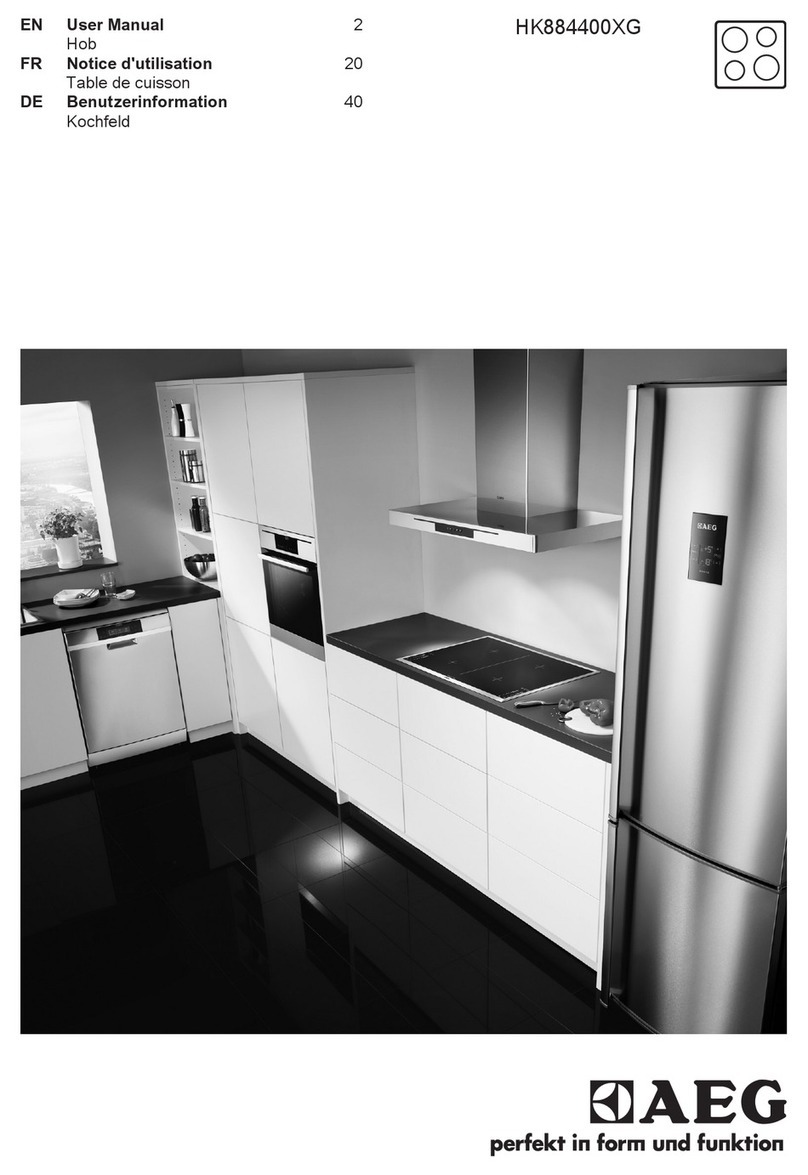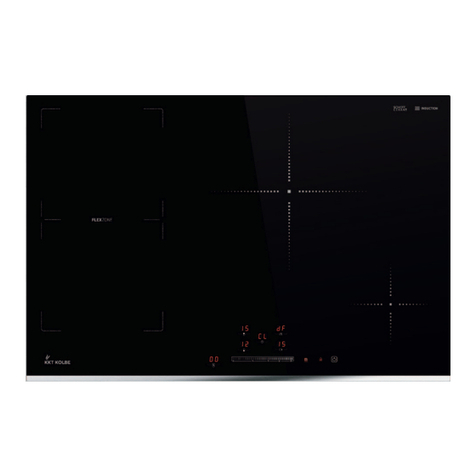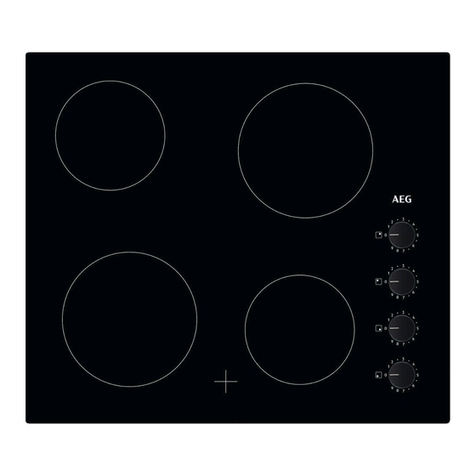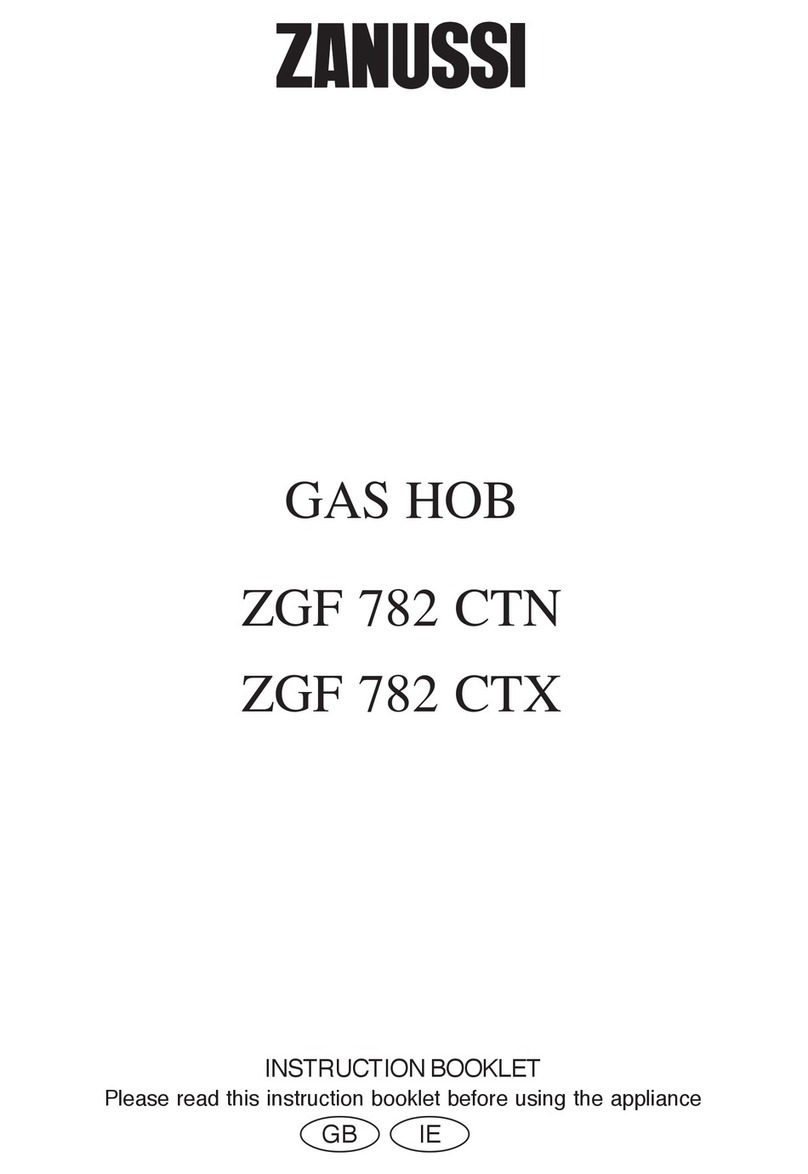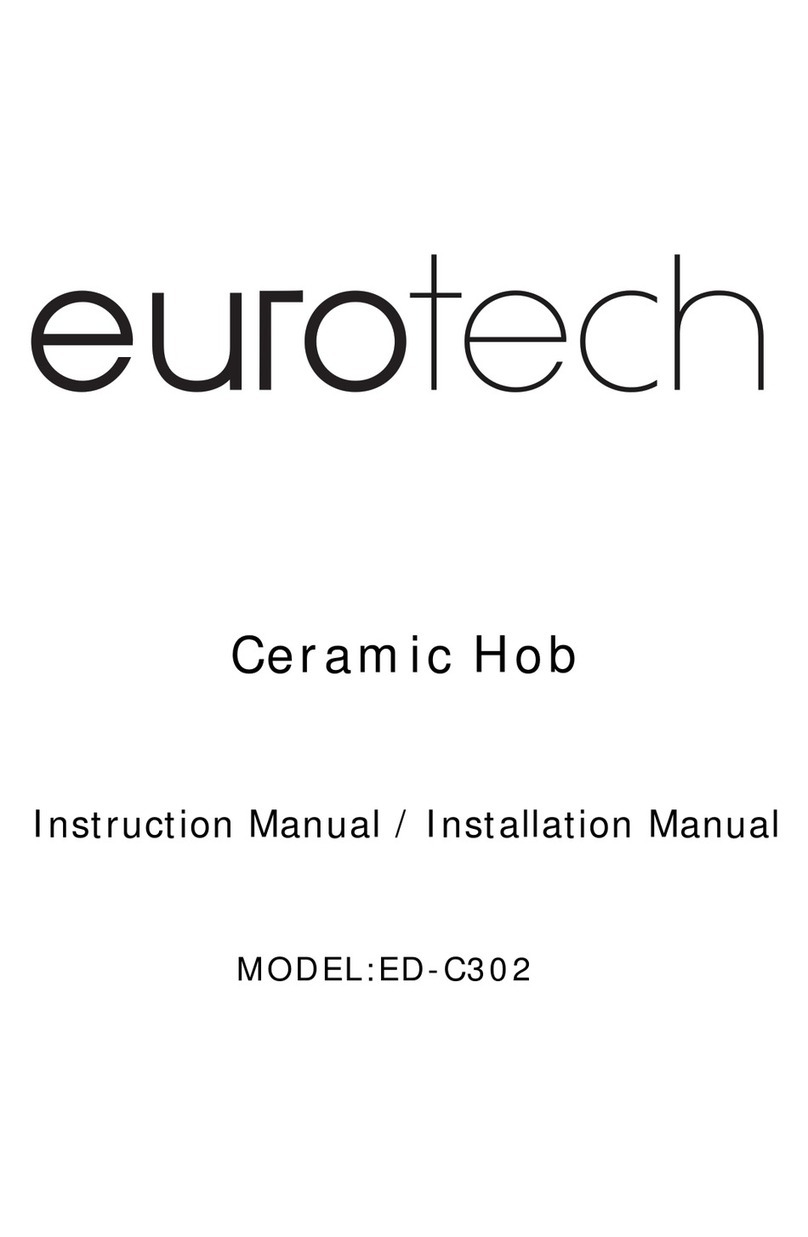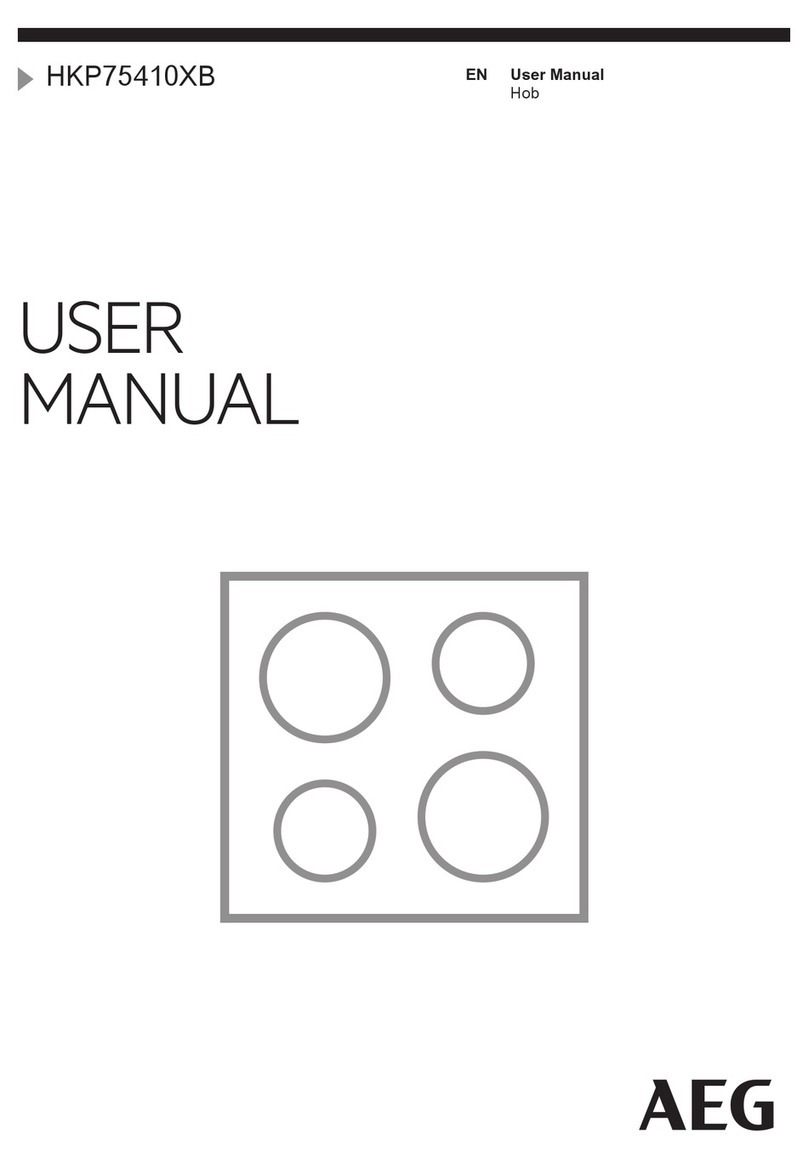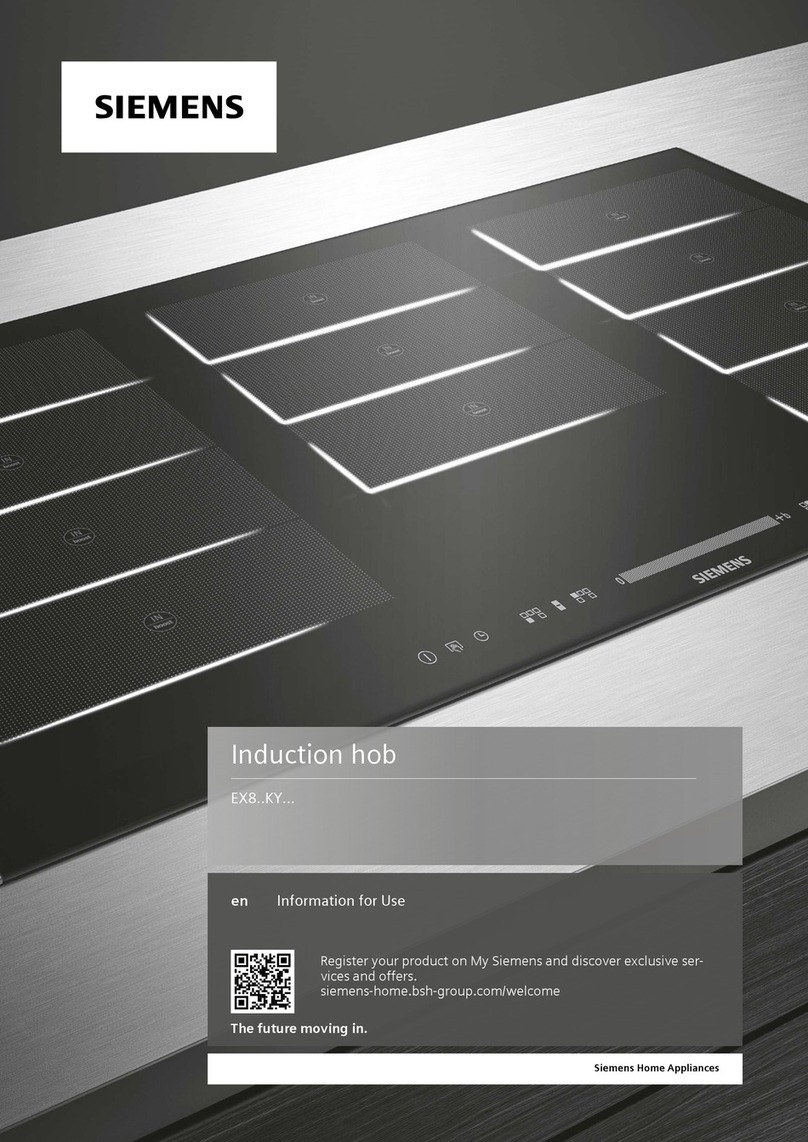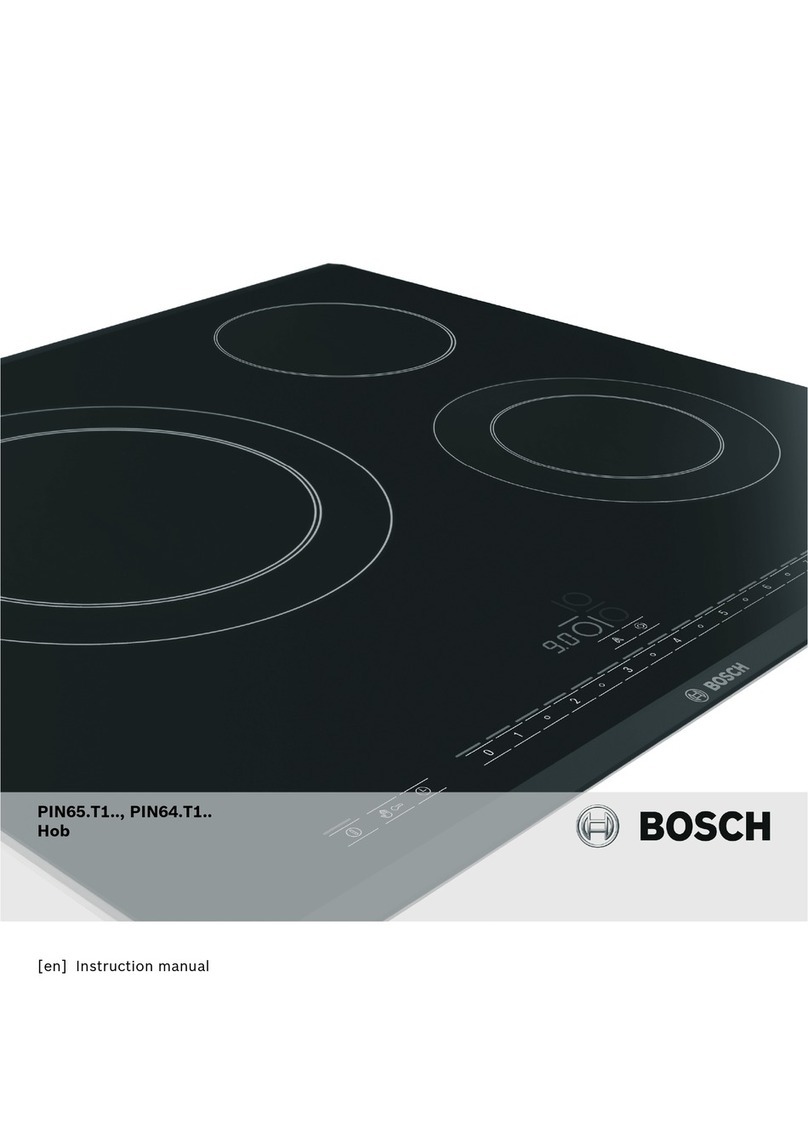8
Wheninstalling the hob aboveabuilt-inovenwithoutforced
ventilation, ensure that there are air inlets and outlets for
ventilatingthe interiorofthecabinetadequately.
Gas Connection for Cooktop
The hob should be connected to the gas supply by an
authorized installer.During installation of this product it is
essential to fit an approved gas tap to isolate the supply
fromthe appliance forthe convenienceof anysubsequent
removal or servicing. Connection of the appliance to the
gas mains or liquid gas tanks must be carried out
according to the safety standards currently in force, and
only after it is ascertained that it is suitable for the type of
gas to be used. If not, follow the instructions indicated in
thesection entitled, “Adapting thehobforDifferentTypesof
Gas”.Ifthe hob is tobeconnectedtotankscontainingliquid
gas,use pressureregulatorsthatcomplywith currentsafety
standards.
Important: To insure that the appliance operates safety,
the gas is regulated correctly and your appliance lasts
overtime, make sure thatgas pressure levels complywith
the indications given in Table 1, “Nozzle and Burner
Specifications”.
Gas Connection to Non-flexible Pipe
(copper or steel)
Connectionto the gas source must be donein such a way
as to not create any stress points at any part of the
appliance.
The appliance is fitted with an adjustable, "L" shaped
connectorandagasketfortheattachmenttothegassupply.
Should this connector have to be turned, the gasket must
bereplaced (supplied withtheappliance).
The gas feed connector to the appliance is a threaded,
male 1/2" connector for round gas pipe.
Gas Connection to Flexible Steel Pipe
Thegas feedconnectortothe applianceisathreaded,male
1/2" connector for round gas pipe. Only use pipes, tubes
and gaskets that comply with current safety codes. The
maximumlengthof the flexible pipesmustnotexceed2000
mm.Oncethe connection has beenmade,ensure that the
flexiblemetal tube does nottouch any moving partsand is
notcrushed.
Check the Seal
Oncethehob has been installed,makesure all the
connectionsareproperly sealed, using a soapywater
solution.Never use aflame.
Adapting the Hob for Different Types of Gas
To adapt the hob to a different type of gas than that for
whichitwasdesigned, (see the sticker underthehoboron
the packaging), the burner nozzles must be changed, as
follows:
•Remove the pan supports and slide the burners out of
thehob.
•Unscrew the nozzles using a 7mm socket wrench and
replace them with those for the new type of gas. (See
Table1,“BurnerandNozzle Specifications”).
•Reassemble the parts following the instructions in
reverse order.
•Oncompletingthe operation,replacetheoldratinglabel
with the one showing the new type of gas; the sticker
is available from our Hotpoint Service (see KEY
CONATCTS,back page).
If the gas pressure is different than that prescribed, a
pressure regulator must be installed at the source, in
compliance with national standards governing the use of
piped gas regulators.
Regulation of Air Supply to the Burner
Theburnersdo not need a primary air regulator.
MinimumRegulation
•Turn the gas valve to minimum.
• Remove the knob and turn the regulator screw
(positioned either on the side of the top or inside the
shaft) clockwise until the flame becomes small but
regular.
N.B.: Inthecase of liquid gas, the regulation screwmustbe
fullyscrewedin (clockwise).
•Make sure that, when the knob is turned rapidly high
to low, the flame does not go out.
•In the event of a malfunction on appliances with the
security device (thermocouple) when the gas supply
isset at minimum,increase the minimumsupply levels
usingthe regulator screw.
Once the adjustment has been made, apply sealing wax,
or a suitable substitute, to the old seals on the by-pass.
Installation Instructions for your built-in Hob
